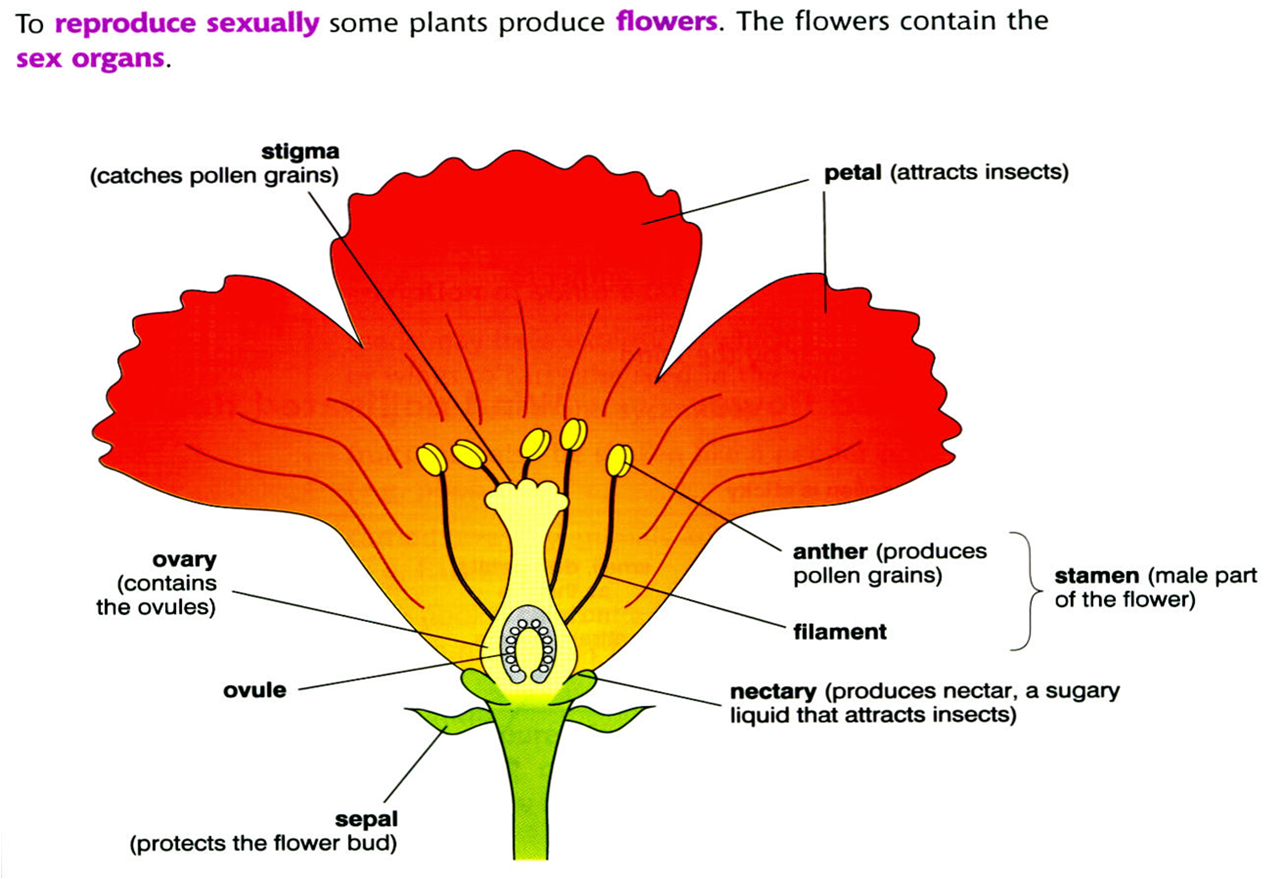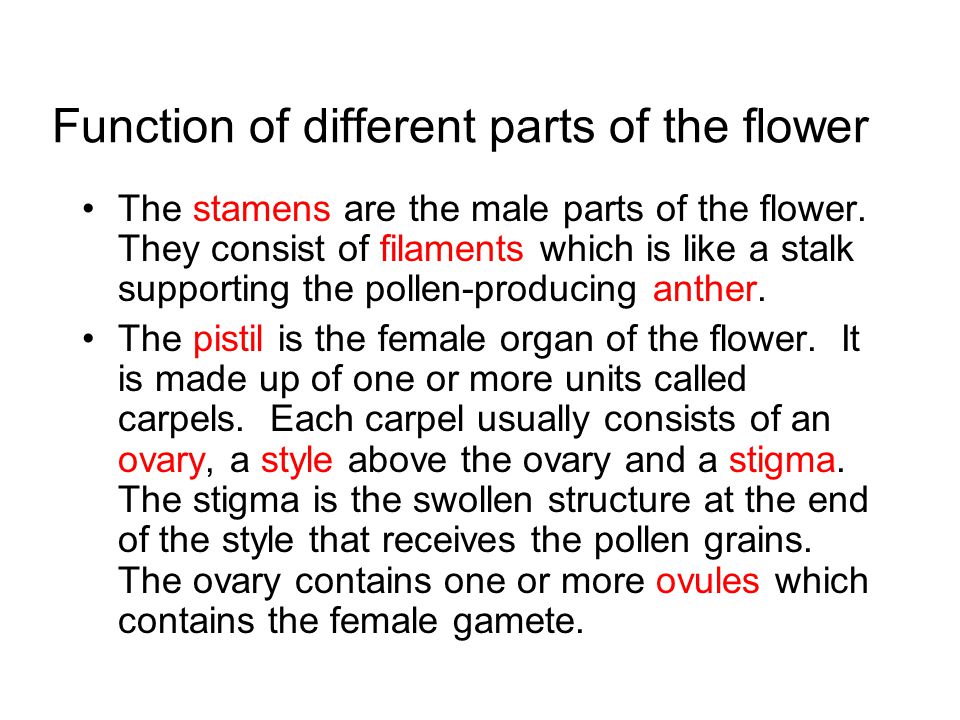Female Parts Of A Flower And Their Functions / Https Encrypted Tbn0 Gstatic Com Images Q Tbn And9gcr4 Homoozkoq0qchsrxn2h7idzodjyniz9ff8gikx8vmqz9l4p Usqp Cau : Male flower structures produce pollen, but female structures house the ovaries, which can mature the style is a tube that raises the stigma above the base of the flower and separates it from the arizona cooperative extension:
Female Parts Of A Flower And Their Functions / Https Encrypted Tbn0 Gstatic Com Images Q Tbn And9gcr4 Homoozkoq0qchsrxn2h7idzodjyniz9ff8gikx8vmqz9l4p Usqp Cau : Male flower structures produce pollen, but female structures house the ovaries, which can mature the style is a tube that raises the stigma above the base of the flower and separates it from the arizona cooperative extension:. Attracting pollinators like insects (e.g., bees, wasps, and butterflies), birds and other small mammals to transfer pollen from male to female reproductive part of a flower. The part of a flower stalk where the parts of the flower are attached. Flower has four main parts staminate/male parts of flower:includes anthers,filaments mature anthers produce pollen grains filaments support the anthers and position it for pollination pistillate/female parts of the different parts of the flower and there function i have written below give a glance at that Flowers with all their flower parts are the same in size and shape. For instance, honeysuckle has showy, attractive flowers which attract insects by day.
Sometimes, flowers have both female and male reproductive parts. Most flowers are hermaphrodite where they contain both male and female parts. Protecting the reproductive structures in flowers. Petals usually bright in color, scented and may produce nectar (a sugary solution) to attract pollinating insects. The stamens are the male part whereas the carpels are the female 2.

Various flower parts and functions.
Petals of various colors surround the male and beautiful flowers are just one part of plants that add to their important function. As you go throw the different flower parts and its functions, you will understand the male and female parts in detail. Students will dissect and identify the different parts of a flower, hypothesize the function of each ovary: Called stamens, these reproductive organs are made up of two parts. Female parts of the flower, consisting of the stigma and the style. The four main parts of a flower are the. Flower parts and their functions. Petals can have several functions in a plant. The female parts of a flower consist of an ovary, which contains one or more ovules, a style and the stigma. Parts of the flower and their functions. Various flower parts and functions. A flower, sometimes known as a bloom or blossom, is the reproductive structure found in flowering plants (plants of the division magnoliophyta, also called angiosperms). A seedy story 1 a) name the male reproductive organ of a plant.
Parts of a flower : The part of a flower stalk where the parts of the flower are attached. Most flowers are hermaphrodite where they contain both male and female parts. With their bright colors, fragrances gymnosperms produce both male and female gametophytes on separate cones and rely on wind for pollination. Male flower structures produce pollen, but female structures house the ovaries, which can mature the style is a tube that raises the stigma above the base of the flower and separates it from the arizona cooperative extension:

A film looking at the various parts of a flower and their functions.
A film looking at the various parts of a flower and their functions. Flowers that rely on other living things for pollination have adapted their anatomical structure to attract these pollinators. The reproductive parts of a flower are actually the most important parts of a flower. However, in the dark, their colourful show is not much use, and their heady scent then helps to. Flower has four main parts staminate/male parts of flower:includes anthers,filaments mature anthers produce pollen grains filaments support the anthers and position it for pollination pistillate/female parts of the different parts of the flower and there function i have written below give a glance at that Most flowers have four main parts: Complete flowers are those that have all four whorls of parts, while incomplete flowers are learning outcomes. Petals of various colors surround the male and beautiful flowers are just one part of plants that add to their important function. We all love flowers because they are so beautiful and fragrant. Parts of the flower and their functions. With their bright colors, fragrances gymnosperms produce both male and female gametophytes on separate cones and rely on wind for pollination. Others may contain one of the two parts and may be male or female. Petals can have several functions in a plant.
The female part of the flower is the carpel, sometimes referred to as the pistil. The stamens are the male part whereas the carpels are the female 2. This is because a flower's main function is to reproduce so that the the male reproductive parts of a flower are much simpler than the female ones. A film looking at the various parts of a flower and their functions. Most flowers have four main parts:

Gynoecium is the fourth and innermost whorl of a flower that consists of the female observe them and separate their parts.
What are the different parts of a flower and their functions? Many flowers that rely on pollinators, such as birds and butterflies, have evolved to have brightly colored petals and appealing scents as a way to attract although all flowers are different, they have several things in common that make up their basic anatomy. Parts of a flower and their functions. Flowers can be described as either complete or incomplete. When a flower has all the four floral parts, it is called a complete flower. A stalk, or style, arising from the ovary; All these parts are designed in such a way that their sole purpose is to reproduce. Flowers that rely on other living things for pollination have adapted their anatomical structure to attract these pollinators. A seedy story 1 a) name the male reproductive organ of a plant. We all love flowers because they are so beautiful and fragrant. Lacking a male stamen, female flowers can have a maximum of three parts. The four main parts of a flower are the. Each part of the plant carries out a specific function to enable the plant.
Flower parts and their functions female parts. They are often bright in colour as their main function is to attract pollinators such as insects.